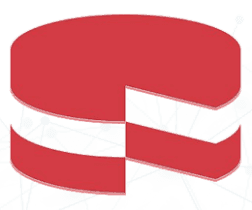Speed up NetCat: Proven Technology
- JavaScript
Merge, Compression, Lazy Loading - CSS
Size compression and load optimization - Images
Compression and conversion with CDN OptiPic - Third party widgets
Online consultants, chats, social networks, etc. - Analytics systems
Google Analytics, Facebook,
etc.
What problems and Google Pagespeed Insights recommendations will be improved
Minimize main-thread work
Consider reducing the time spent parsing, compiling and executing JS. You may find delivering smaller JS payloads helps with this.
Eliminate render-blocking resources
Resources are blocking the first paint of your page. Consider delivering critical JS/CSS inline and deferring all non-critical JS/styles.
Reduce unused JavaScript
Reduce unused JavaScript and defer loading scripts until they are required to decrease bytes consumed by network activity.
Reduce unused CSS
Reduce unused rules from stylesheets and defer CSS not used for above-the-fold content to decrease bytes consumed by network activity.
Ensure text remains visible during webfont load
Leverage the font-display CSS feature to ensure text is user-visible while webfonts are loading.
Reduce the impact of third-party code
Third-party code can significantly impact load performance. Limit the number of redundant third-party providers and try to load third-party code after your page has primarily finished loading.
Serve static assets with an efficient cache policy
A long cache lifetime can speed up repeat visits to your page.
Reduce JavaScript execution time
Consider reducing the time spent parsing, compiling, and executing JS. You may find delivering smaller JS payloads helps with this.
Efficiently encode images
Optimized images load faster and consume less cellular data.
Serve images in next-gen formats
Image formats like WebP and AVIF often provide better compression than PNG or JPEG, which means faster downloads and less data consumption.
Check the speed of NetCat - specify your website
How to get started with Pagespeed OptiPic service for NetCat
Order technology deploy OptiPic:Pagespeed
Wait for the test implementation by OptiPic team
Deposit funds to your account and select a package
Pricing: Deploy + Subscription
One-time payment for deploy. Monthly payment for a subscription.
Включая ускорение бекенда, TTFB, время ответа сервере, время до первого байта
How to increase the speed of NetCat on the front-end side (client acceleration)
In addition to compressing the acceleration images NetCat on the front-end side, one can also achieve through the optimization of other components:
- Caching of static files on the server side (images, css, js).
- Combining css.
- Compressing css.
- Joining js.
- Compression js.
- Transferring css and js to the bottom of the html code page.
- Disabling unnecessary scripts and widgets.
Accelerating the download NetCat on the back-end (server acceleration)
Server-side acceleration is the goal of minimizing page generation time by the server. This is usually promoted by the following methods:
- Changing the hosting or server to a more powerful one
- Optimization of web server settings (apache, nginx, php-fpm).
- Optimize the settings for mysql (or another sub-site that the site uses).
- Caching database queries.
- Caching queries against third-party APIs.
- Caching of everything that is possible (Composite site technology and the like)
- Refactoring and optimization of php-code logic.
The OptiPic experts know all the subtleties of acceleration and are ready to tackle the complex acceleration of your site. Contact us if you need the maximum acceleration of your site.
Improving Website Performance with Pagespeed Netcat
Slow website loading times can have a significant impact on user experience and ultimately, the success of a website. One powerful tool that developers and site owners can use to optimize and enhance their website's performance is Pagespeed Netcat.
What is Pagespeed Netcat?
Pagespeed Netcat is an open-source command-line tool developed by Google that analyzes and optimizes web pages to achieve faster page load times. It offers a wide range of optimizations, from minifying HTML, CSS, and JavaScript files to optimizing image assets and leveraging browser caching.
How does Pagespeed Netcat work?
When you run Pagespeed Netcat, it fetches the specified webpage and applies various optimization techniques to improve its performance. It then provides detailed analysis and suggestions on possible further optimizations.
Some of the key optimizations performed by Pagespeed Netcat include:
- Minification of HTML, CSS, and JavaScript: Pagespeed Netcat removes unnecessary characters, whitespaces, and comments from these files to reduce their size, resulting in faster downloads.
- Image optimization: The tool can automatically compress and resize images, reducing their file sizes without compromising quality. This leads to faster image loading times on webpages.
- Leveraging browser caching: By setting appropriate caching headers, Pagespeed Netcat enables browsers to store certain resources locally, allowing for faster subsequent page loads.
How to use Pagespeed Netcat?
Using Pagespeed Netcat is relatively straightforward, as it only requires a few steps:
- First, ensure you have Pagespeed Netcat installed on your system. It requires a somewhat technical setup process, so it may be helpful to consult the official documentation for detailed instructions.
- Once installed, open the command-line interface on your system and navigate to the appropriate directory.
- Execute the 'pagespeed' command followed by the URL of the webpage you want to analyze and optimize. For example:
Pagespeed Netcat will then run the analysis and optimization process, providing detailed feedback and suggestions on improving your website's page load times.
Conclusion
Optimizing website performance is crucial for ensuring a smooth and enjoyable user experience. By leveraging the powerful capabilities of Pagespeed Netcat, developers and site owners can identify and implement various optimizations that enhance their webpage loading speeds. Incorporating Pagespeed Netcat into your development workflow can lead to significant improvements in website performance and overall user satisfaction.

 CakePHP
CakePHP  AMIRO.CMS
AMIRO.CMS  Yii
Yii  Zend Framework
Zend Framework  FuelPHP
FuelPHP  InstantCMS
InstantCMS